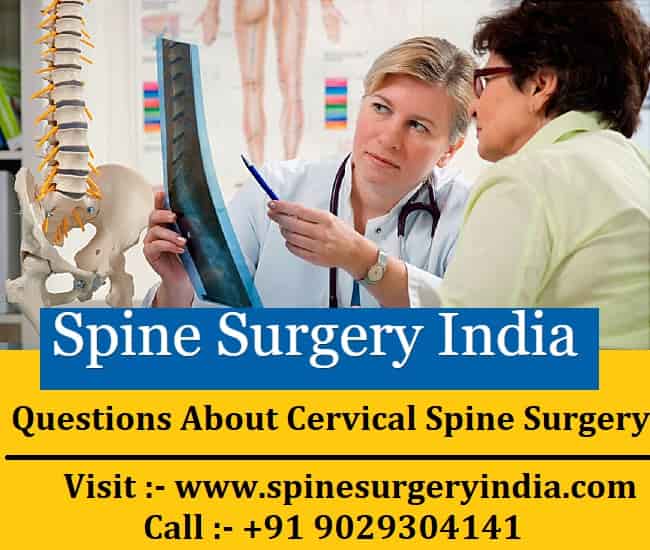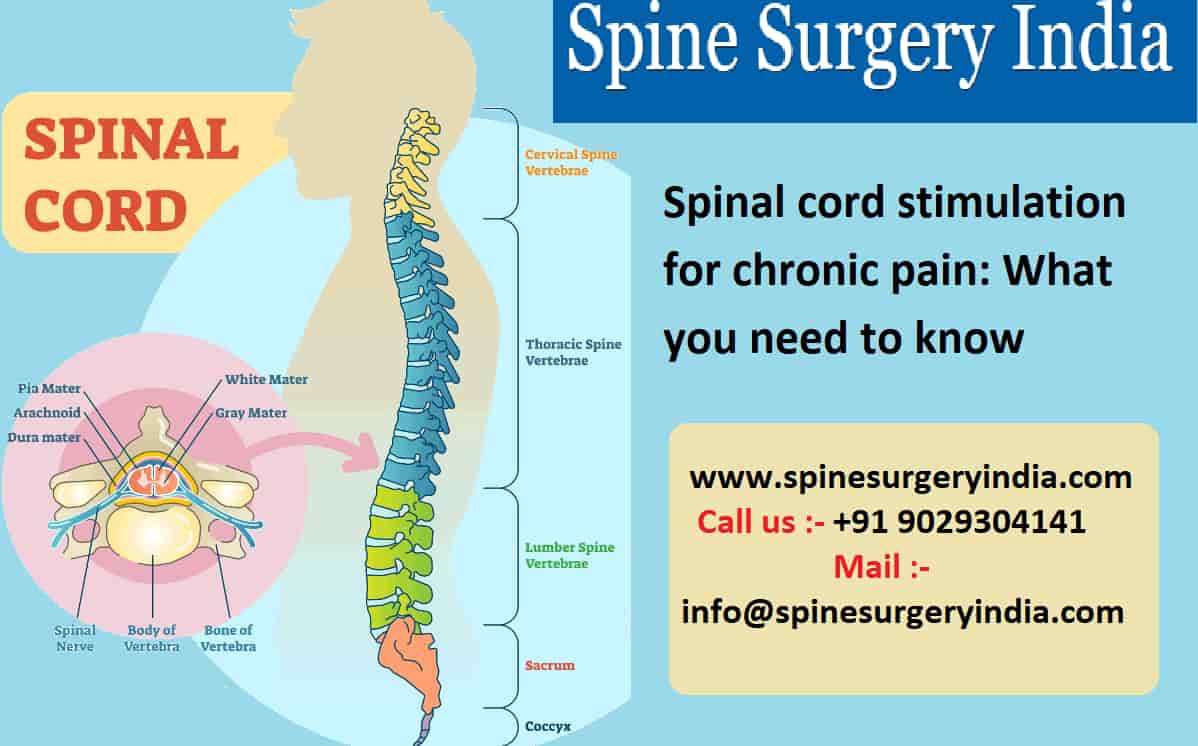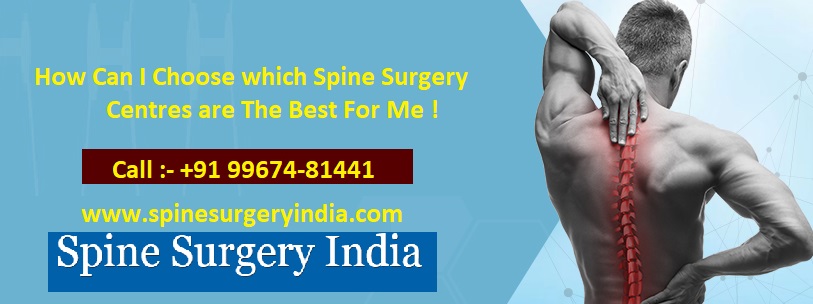
The following is the questionnaire to ask from your surgeon when they recommend the cervical spine surgery:
1. What is the experience of the surgeon and how many does he or she perform the procedures every year?
2. What are the success rates of the cervical spine surgery performed by him or her?
3. Is there any other professional also assist him or her in the operating room?
4. What steps does the procedure involve?
5. Are there any non-surgical options are also available apart from surgery?
6. If I do not wish to undergo for the surgery, what issues could be happened?
7. Is there any risks and complications are associated with cervical spine surgery procedure?
8. Please explain the risks and how they relate to me personally?
9. What are the long-term consequences of the cervical spine surgery procedure?
10. Do I need to stop any medications?
11. How long will the surgery take?
12. How long do I need to stay in the hospital?
13. What kind of pain should I expect after the surgery and for how long it exists?
14. How you manage the pain in the hospital and after that?
15. Which pain medications will the surgeon give to me for a home? What are the possible side effects of these prescriptions?
16. To whom I can call if I have questions after surgery? What is the process of communication?
17. How often I need to visit the hospital for follow-ups after the surgery?
18. What limitations do I need to follow after the surgery and for how long?
19. How long will I be out of work or school after the surgery?
20. What kind of help will I need when I return home?
21. When can I drive again after the surgery?
22. What are the expectations you have from my surgery?
23. How soon after my surgery I can start with physical therapy?
24. What is the cost of cervical spine surgery?
Before preceding the cervical spine surgery you need to ask these questions as each patient is different and will have specific concerns and considerations to make. It is most important to ask as many questions you have in your mind, make your own list of questions and write down before meeting your surgeon.
What do you understand by cervical spine surgery?
To understand cervical spine surgery in a better way, it is important to know about neck anatomy, spinal conditions which affect your cervical spine. It is very important to know how your neck is supposed to function and why you have pain, as well as what will be done to address your condition in surgery.
Anatomy of the Neck
The cervical spine contains 7 bones which are known as cervical vertebrae. These bones are stacked on top of one another and are linked by discs, muscles, and ligaments.
These vertebrae in your spine are numbered from C1 through C7. C1 is the first vertebra which is known as the atlas because this vertebra joins with the base of the skull and supports your head. C2 is the second vertebra which is known as the axis because of the head and C1 swivel around it. These are the two vertebrae which enable the most of the neck movement.
The vertebra which is below the C2 is only referred to by number, and all of them have the same basic structure which includes:
• The vertebral body: This is a cube-shaped bone.
• Lateral masses: They are small columns of dense bone which is located on the sides of the vertebral bodies.
• Facet joints: This is a smooth area which is lined with cartilage that helps in facilitating the movement.
• Lamina: This is a thin semi-circle arch of bone which is located behind the vertebral body, and it forms the roof of the spinal canal which helps in protecting the spinal cord as it travels down the spine.
Spinal Cord and Nerves
The spinal cord is a cord which runs through the cervical spine and it will be protected in front by the vertebral bodies and behind by the lamina. Nerves which control your arm function branch off from the spinal cord in the cervical spine. The nerves which exit the cervical spine through small holes is known as foramina.
Intervertebral Discs
The discs which start from C2 to C3 are an intervertebral disc which sits between each vertebra. Intervertebral discs look like a pillow which has a tough outer ring and a dense, jelly-like center.
The two most important functions are performed through intervertebral discs and these are:
• The intervertebral discs act as shock absorbers between the vertebral bodies.
• They perform a function as flexible pivots which help to provide motion between the vertebrae.
What conditions are treated by cervical spine surgery?
The following are the conditions that can be treated by cervical spine surgery at the hospitals under Spine Surgery India and these are:
a) Degenerative Disc Disease: The degenerative disease is the disease in which the discs or cushion pads between your vertebrae shrink which will cause wearing of the disc and this may lead to herniation. You may also have arthritic areas in your spine. The degeneration disease of the disc can cause pain, numbness, tingling, and weakness from the pressure on the spinal nerves.
b) Cervical Deformity: Patients who are dealing with a deformity in their cervical spines, such as swan neck or hyperlordosis deformity may get benefit from surgery which will straighten and stabilize the spine. The disorders of the upper neck are also known as craniocervical or abnormalities which can affect the cervical spine.
As we all know, that the neck is so flexible and it is vulnerable to injury. Some injuries can cause a fracture or dislocation of the cervical vertebra. If the injury is severe then there are chances that it can damage your spinal cord. Patients with a fracture, especially who had spinal cord damage will undergo surgery to relieve pressure on the spinal cord and to stabilize the functioning of their spine.
Related posts
Oct29
Sep28
Aug05
Nov07



















